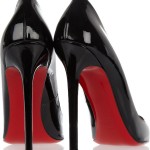How to Buy Animal Friendly Clothing

As someone who spends money on food, clothing, luxury goods, and entertainment, you are a consumer. Companies don’t care about how you feel unless it directly impacts whether or not you, as a consumer, choose to purchase their goods or services. While joining an organization or volunteering time and money are acts that make an impact, the greatest individual power you have is how you spend your money. By making conscientious decisions, you can show companies that animal-friendly products sell better than those that utilize inhumane practices.
The materials your clothing is made of all came from somewhere. Some clothing material is plant-based, like cotton or hemp. Some is synthetic or man-made, like nylon or rayon. Some of our clothing material comes from animals, like leather or wool.
When it comes to the garment industry, no animal is treated kindly. Here are some examples of clothing made from animal products, how and why to avoid them, and what you can buy instead.
Fur
The fur industry is by far and away the cruelest when it comes to animals and clothing. Animals turned into fur coats, hats, stoles, and gloves are either raised on fur farms or trapped from the wild. Fur farms have been know to keep animals in filthy, cramped, and psychologically damaging environments. Some animals raised on fur farms are skinned alive to keep pelts intact with a complete disregard for the pain the animal feels as it dies slowly from blood loss and shock. Traps are no better, and often the animals are stuck to suffer for hours before someone makes the rounds and puts them out of their misery. Caught animals sometimes die of shock, heart attack, or stroke, or attempt to chew off the trapped limb. Many non-target animals also get killed unnecessarily this way, as a trap cannot tell the difference between a rat and a squirrel.
Luckily, fake fur is in! Faux furs can be made to look and feel like the real thing, or they can be dyed bright pink and feel like plastic. The point is that if you like fur but can’t justify supporting animal cruelty, you’ve got tons of options. As an added bonus, the synthetic fibers used to make fake fur tend to hold up better under frequent wear.
Leather
Leather is made from cowhide, and very fashionable. Many people rationalize buying and wearing leather products by saying that the hide would go to waste otherwise because the cow was butchered for meat. That’s not the worst argument to make, but synthetic options are everywhere as well as less expensive. Why buy animal if you can buy fake for less, and no one’s the wiser?
Check labels on clothing and either the sticker or the inside of the shoe for a list of materials used. If something looks and feels like leather but uses the words “man-made” or “synthetic,” no animal products went into making the clothing. Phrases like “genuine leather” or “leather upper” indicate that you are holding cowhide.
For those afraid to give up the waterproof quality of leather shoes, try treating a synthetic pair with a waterproofing or water-repelling product. You’ll be amazed at how you can no longer tell the difference yourself.
Wool
Wool comes from sheep raised on farms specifically for their coats. Although sheep are not killed in the shearing process, most people don’t know that thousands of sheep die every year because of breeding practices. Over the years, sheep have been bred to grow thicker and thicker coats to increase wool production on sheep farms. Unfortunately, sheep have not evolved quickly enough to keep up with their new super-thick coats, so many die of heatstroke and dehydration in the summer.
Again, check labels for fabric content. Alpaca and angora are also common fibers used in winter clothing, and both come from animals. If you knit, crochet, or rug hook, be sure to check yarn contents before you buy.
Acrylic, cotton, and a variety of synthetic blends substitute for animal products in clothing and craft yarn. The difference is minimal, and manufacturers can reproduce the whole spectrum of colors and textures without using animal products.
Goose down and assorted feathers
Goose down is the layer of soft “baby feathers” that sit closest to the bird’s skin for insulation. When feathers are harvested from the birds, they are plucked directly from the skin. This causes severe pain, welts, skin ailments, and long-term irritation particularly for geese because of their very sensitive skin.
Goose down is used as an insulator in winter vests, jackets, and comforters as well as pillow stuffing. Other feathers from chickens, pheasants, and peacocks are sold as craft items, decorations, pet toys, and clothing accessories.
Unfortunately, there really isn’t anything on the market that feels like a down pillow, but feathers may be something you can live without buying. Should you not be able to live without them, try second-hand stores. That way your dollars only go to support the thrift shop and not the makers of the product.




